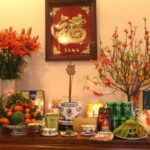According to folk belief, the 23rd day of the twelfth lunar month is when the Kitchen Gods return to Heaven to report on the activities of every household over the past year. This report is then used by the Jade Emperor to assess and reward or punish each family accordingly.
As a result, it is a Vietnamese tradition to prepare a ceremonial send-off for the Kitchen Gods, with the hope that only the good deeds will be reported. Let’s take a look at what dishes are typically included in this ceremony.
1 A Deluxe 10-Course Ceremony Meal
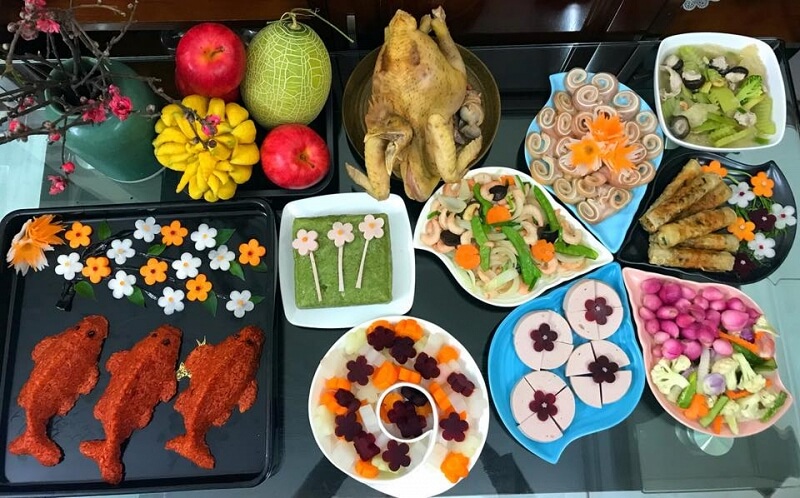
This meal primarily consists of traditional dishes but is presented with a modern twist, resulting in an elegant and novel offering. The highlight of this meal is the colorful presentation, achieved through creative arrangements of the ingredients in the form of diverse floral shapes.
The 10-course meal includes:
-
Spring rolls
-
Fried fish
-
Sweet and sour pork
-
–
-
Braised pork belly
-
Stir-fried vegetables
-
Steamed rice
-
Fruit platter
-
Sweet soup
2 An Elaborate 8-Course Ceremony Meal
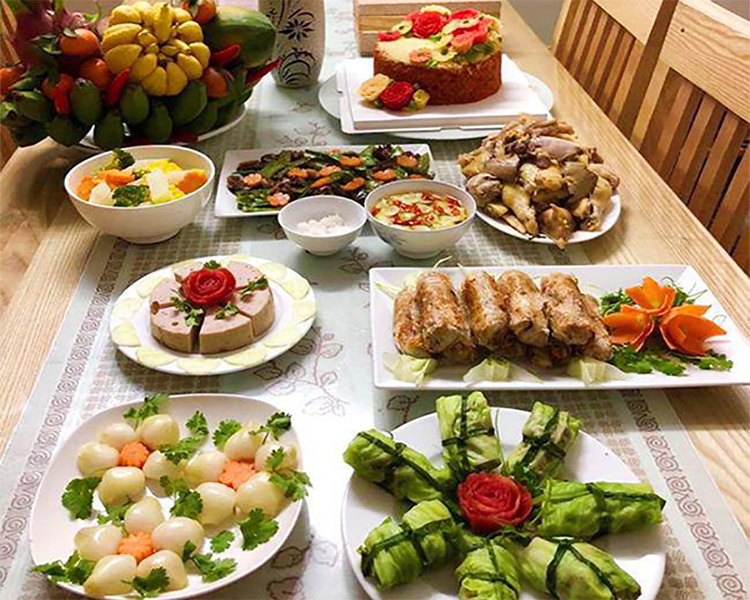
In addition to the offerings, this meal is also a favorite due to its delicious traditional dishes and familiar cooking methods. The dishes are presented in a classic style, reflecting the rich culture of Vietnam. The host can easily create unique and eye-catching flower shapes with the food, adding color and appeal, such as fried spring rolls, boiled chicken, pork sausage, pickled onions, vegetable soup, and stir-fried vegetables. Additionally, this meal includes a unique and modern dish: “cabbage rolls with stewed meat.”
The 8-course meal includes:
-
Fried spring rolls
-
Boiled chicken
-
Pork sausage
-
Pickled onions
- Vegetable soup
3 A Simple 7-Course Ceremony Meal
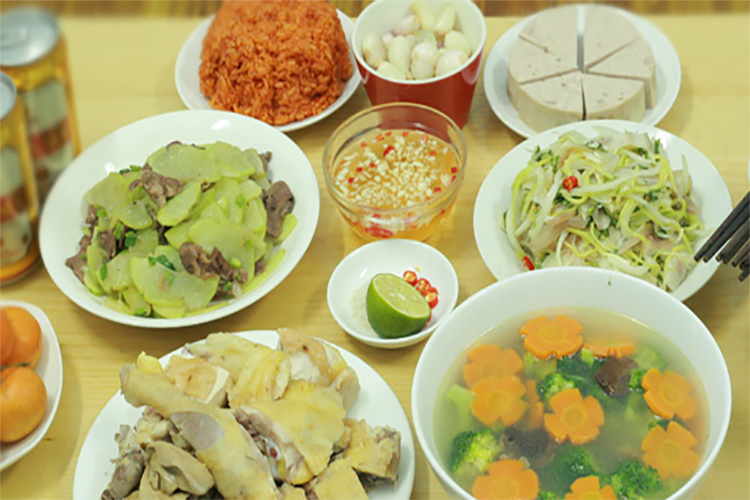
This meal includes familiar and easy-to-prepare dishes. Take note of the dishes listed below, as their simplicity means that even if you’re busy, you can still put together an impressive spread.
The 7-course meal includes:
-
Red sticky rice
-
Pickled onions
-
Pork sausage
-
Cauliflower and carrot soup
-
Stir-fried pork heart with chayote
4 An Impressive 7-Course Ceremony Meal
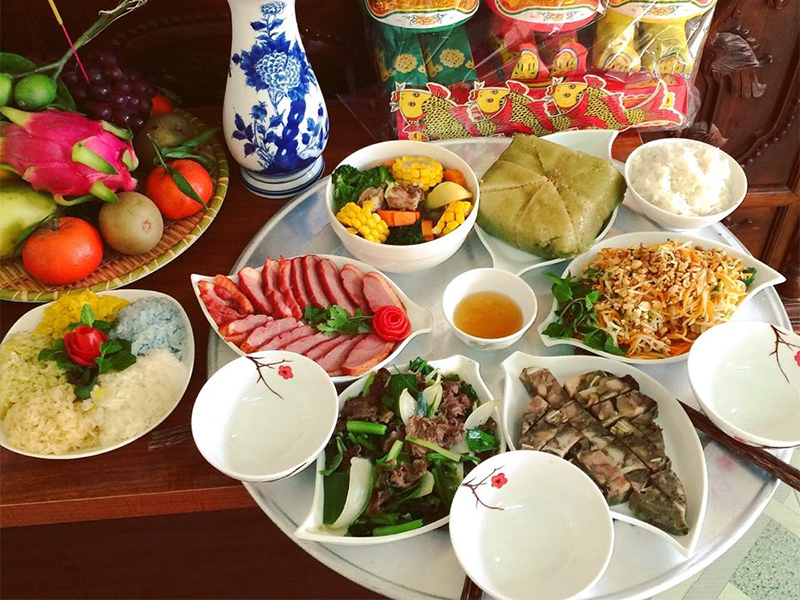
Similar to the previous meal, this option is also ideal for busy office workers as it is quick to prepare and cook. Despite its simplicity, a well-presented meal can still convey a sense of solemnity.
The 7-course meal includes:
-
Braised fish
-
Sweet and sour pork
-
Steamed rice
-
Vegetable soup
-
Stir-fried vegetables
-
Fruit platter
5 A Quick 4-Course Ceremony Meal

This is the perfect choice for those who are too busy but still want to be thorough in their preparations for the Kitchen Gods’ ceremony. In reality, the ceremony meal for the Kitchen Gods doesn’t have to be elaborate, but it should be solemn and serious to show respect to the deities.
The 4-course meal includes:
-
Boiled chicken
-
Vegetable and bone soup
-
Steamed rice
-
Boiled vegetables
Especially on Thanh Minh Festival, to show respect to their ancestors, Vietnamese people should learn about the van khan (worshipping oratory) to be fully prepared.
I hope that with these suggestions, you now have a better idea of how to prepare your own ceremony meal. Whether you choose to go elaborate or keep it simple, remember to always be thorough and solemn in your preparations for this important day.
7 Appropriate and Practical Lunar New Year Gifts for Teachers
With Lunar New Year just around the corner, what better way to express your appreciation to your teachers than with a special gift? Choosing the right gift can be tricky, so let Dien May XANH help you out! Here, we have hand-picked 7 luxurious yet suitable gifts that you can give to your teachers this Tet. Check them out now!





























